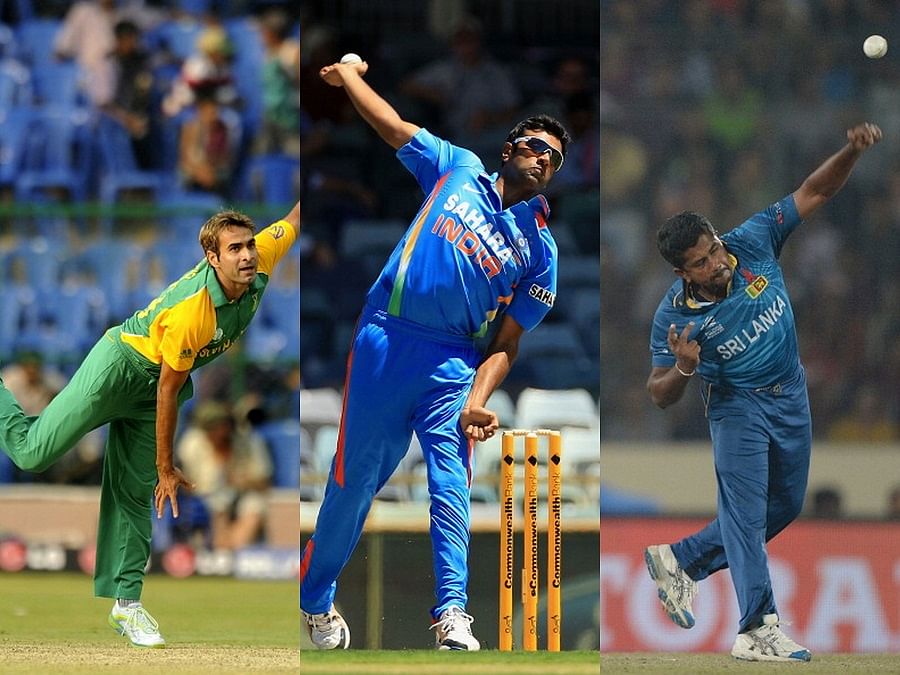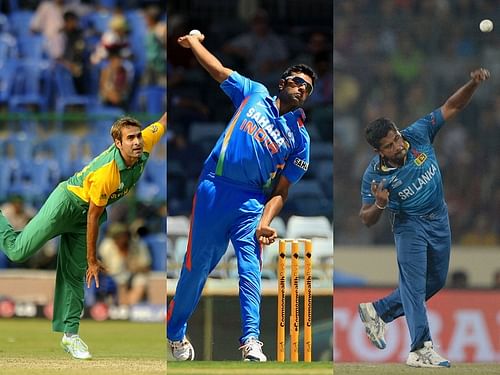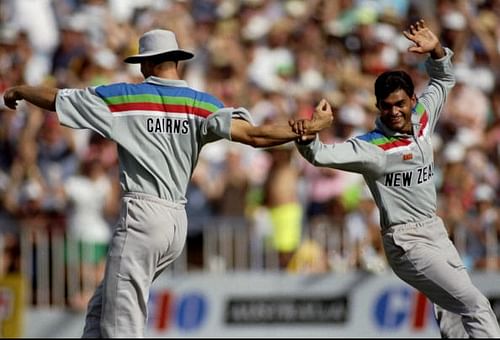
Will spinners tweak the plot at 2015 World Cup?

In light of England's loss at home in ODIs to India and Sri Lanka, Stuart Broad recently said that England's fallibility to spin would not count for much down under during the World Cup. He may be right, as out of 16 venues for the World Cup (8 each in Australia and New Zealand), the grounds in New Zealand and venues such as Hobart and Canberra in Australia have shorter boundaries, truer wickets with pace and bounce and it would be easier for batsmen to hit the spinners around.
This piece analyses, based on statistics and past experience, if spinners would make an impact, if any, at the World Cup.
Lessons from ‘92 World Cup
Completely discounting the role of spinners in Oceania, especially in the 1992 World Cup would be foolhardy. Martin Crowe's use of Dipak Patel as an opening bowler is considered to be one of the greatest strategies seen at World Cups. Mushtaq Ahmed's performance was crucial to Pakistan's title win.
A look at the numbers of both the bowlers puts their role in their sides into perspective. Mushtaq Ahmed played eight matches in the '92 World Cup, taking 16 wickets at an average of 19.43. These include three wickets versus Australia at Perth, three against England at Melbourne and 2 for 18 from 10 overs against New Zealand at Christchurch, all grounds typically known to be seamer friendly.
Dipak Patel was used by Crowe to open the bowling. He played all his games in New Zealand and came up with returns of eight wickets from nine games at an economy of 3.1 runs an over, thereby throttling the runs during the fielding restrictions. An economy of 3 in an ODI was gold dust even for ODIs played in the early 1990s.

These performances were in stark contrast to both Mushtaq and Dipak's averages in Australia and New Zealand overall.
Another difference between the two bowlers is that Dipak Patel was a finger spinner, while Mushtaq Ahmed was a wrist spinner. An important to note is that Mushtaq was used in an attacking role by Imran Khan and not merely to get through the overs. Therefore, the traditional use of a spinner to pick wickets with flight and guile also found favour at the '92 World Cup in addition to putting pressure with slow bowlers up front in the innings.
How do spinners fare down under?
Moving on from the lessons from the 1992 World Cup, let's take a look at the performance of spinners in Oceania in the last 23 years. In terms of pure numbers, the greatest spinners across the world would be Warne, Murali, Kumble, Afridi and Saqlain Mushtaq, with Harbhajan and Vettori as honorary additions.
The table below provides their achievements in numbers in Australia and New Zealand:
|
Bowler |
ODIs played in Oceania |
Wickets |
Average |
|---|---|---|---|
|
Shane Warne |
95 |
152 |
24.15 |
|
Daniel Vettori |
144 |
145 |
33.86 |
|
Muttiah Muralitharan |
53 |
88 |
28.22 |
|
Shahid Afridi |
42 |
45 |
32.24 |
|
Anil Kumble |
26 |
33 |
31.81 |
|
Saqlain Mushtaq |
23 |
31 |
25.90 |
|
Harbhajan Singh |
14 |
14 |
34.35 |
This list has three leg spinners and off spinners each, and one left-arm spinner. These numbers clearly show that lead spinners across teams have made some incision in both Australia and New Zealand. Though, a breakdown shows Australia a more spinner friendly venue in comparison to New Zealand.
Sydney and Adelaide have always been sporting pitches which usually assist spinners. But there have been instances where spinners, who have relied on bounce, have proved to be a handful at other venues in Australia and in New Zealand.
Anil Kumble, for instance, has 19 wickets from 11 games in New Zealand at an average of 24. This includes a five-wicket haul in Wellington, a ground which is arguably the worst for spinners.
In the post Warne era, Australia used another wrist spinner, Brad Hogg, who took 57 wickets in 43 games at an average of 28.61.
Though the numbers reflect only a minute difference in the overall impact, wrist spinners have performed slightly better. While Warne was in a different league altogether, Kumble, Afridi and Hogg relied more on bounce and pace to tie the batsmen down, which must be seen by team managements as a way to use their spinners effectively.
Looking at the current batch
Currently, ICC is in a crackdown mode against illicit actions and therefore spin options available for teams are limited.
Frontline spinners like Saeed Ajmal and Sunil Narine are currently remedying their actions and may not be available for the World Cup. Pakistan has bigger worries considering even Mohammad Hafeez has been called for a suspect action. In this scenario, let's take a look at the performance in Oceania of some of the first choice spinners across teams right now:
|
Bowler |
ODIs played in Oceania |
Wickets |
Average |
|---|---|---|---|
|
Robin Peterson |
7 |
10 |
27 |
|
Imran Tahir |
5 |
5 |
40.00 |
|
Ravichandran Ashwin |
12 |
8 |
66 |
|
Ravindra Jadeja |
13 |
7 |
81.14 |
|
Ajantha Mendis |
2 |
2 |
51.50 |
|
Rangana Herath |
11 |
9 |
43.22 |
|
James Tredwell |
4 |
0 |
-- |
|
Shakib Al Hasan |
9 |
12 |
28.66 |
None of the averages above, barring Shakib Al Hasan’s, seem pleasing. Robin Peterson's performance is slightly misleading as a four-wicket haul at Sydney in the recent ODI series in Australia has improved his numbers considerably. He averages in the 40s in New Zealand. Therefore, despite the favourable numbers, it cannot be said that left-arm spin can be an asset.
Also, considering how ineffective Ravindra Jadeja has been as recently as early 2014 in New Zealand, this should be even more noteworthy.
Assuming Ajmal and Narine return to their sides respectively, even their records don't inspire much confidence. Narine has returns of 13 wickets from 14 games at an average of 38.75 and an economy of more than 5 runs an over.
Ajmal on the other hand has had returns of 3 wickets from 4 games, all of which were played in Australia at an average of 66. In fact, if spinners had to used upfront in the innings, economy rates upwards of 5 would hardly be something captains would want to rely on.
Taking cue from the analysis above of records, Imran Tahir and Ajantha Mendis (who remains aloof of any categorization) are the only wrist spinners who may make it to a playing XI of their respective sides, both of whom haven't had much exposure in Oceania to be considered effective.
This being said, a criteria that should be considered is that the World Cup is an ICC event. Looking back at the experience at the Champions Trophy in England in 2013, Cricket Australia and New Zealand Cricket would ensure drier wickets where spinners may have some role.
Also, the fact that the World Cup is being held towards the end of summers in Oceania may also result in drier wickets which can assist turn.
Purely based on numbers and the circumstances resulting out of the present ODI rules, Stuart Broad may stand vindicated at the World Cup. For teams like India, Sri Lanka and Bangladesh, which rely a lot on spinners, this would be a cause of concern.
Considering team combinations are yet to be fixed, all teams should try and give a wrist spinner the chance to have an impact down under and do well. Though such an assertion is contingent on the team plan to use spinners in an attacking role.